Facilities & equipment
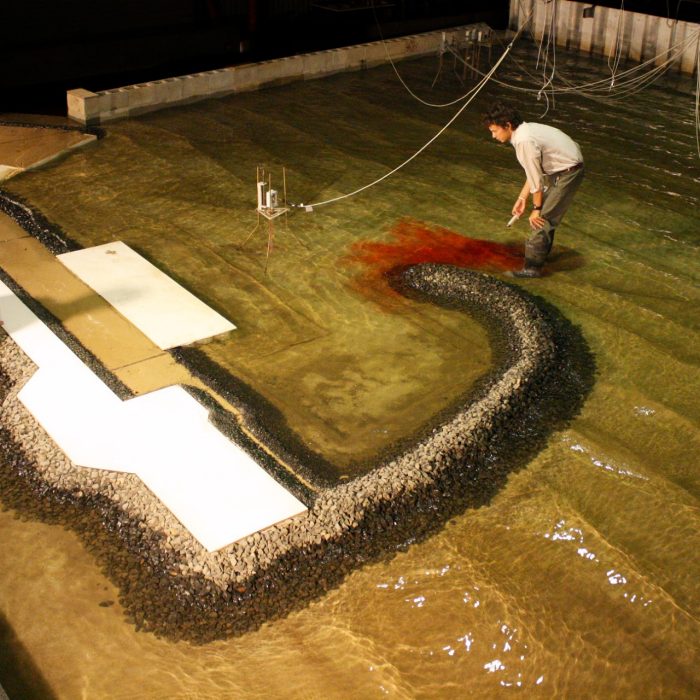
We're one of the only organisations in the Oceania region with large-scale laboratory spaces and expertise to provide commercial physical modelling services for our clients. Whether we're working in the catchment, on the water, or at the beach, we have the specialist equipment and knowledge to collect real-world data and analyse it to solve real-world problems.
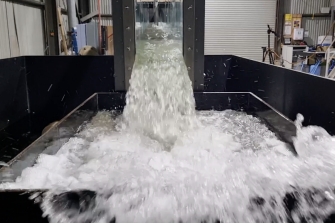
0.4 m tilting flume
The tilting flume is equipped with a winch that can lift the flume to a grade of 10%, allowing the flume to be used in a wide range of flow conditions. The recirculation system can produce flow rates of up to 130 L/s, allowing a range of flow conditions to be tested. The flume can quickly test the effect of both slope and flow rate on stability, sedimentation or a range of other parameters.
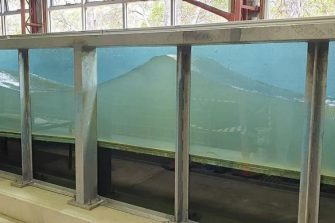
0.9 m wave and open channel flume
0.9 m wave and open channel flume
The Water Research Laboratory’s 0.9 m wave flume measures approximately 36 m in length, 0.9 m in width, and 1.6 m in depth. The flume walls are primarily constructed of brick, with a large glass panelled section where models are constructed, allowing visual observations to be made throughout testing. The permanent floor of the flume is constructed of concrete, although site specific two-dimensional bathymetric profiles can be reproduced in the flume using an adjustable elevated timber floor system.
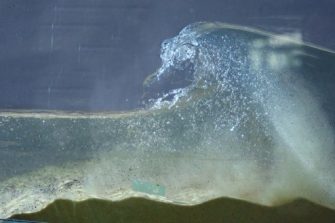
1.2 m wave flume
1.2 m wave flume
Our 1.2 m flume is our flagship physical modelling facility which is regularly used to optimize coastal structures around the world. Our technicians and engineers construct and test bespoke 2D models in this flume with scales ranging between 1:10 to 1:50 and model waves up to 0.4 m.
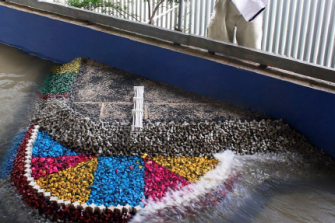
3 m wave flume
The Water Research Laboratory’s 3 m wave flume is one of the largest flumes in Australia. It is 32 m long by 3 m wide by 1.3 m deep and has a level floor. The wave generating paddle occupies 3 m of flume length, giving a useable length of 29 m. Bathymetry is added (when required) by installing either a sand or plywood bed to the required slope.
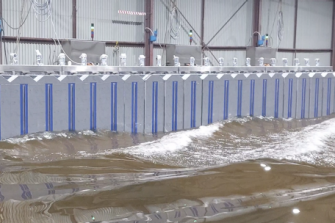
Wave basin
Wave basin
WRL's wave basin is used for wide range of coastal studies including coastal structures, breakwater and harbour models and beach morphology investigations. Our basin underwent a complete rebuild in 2022 increasing in size, depth and capability, creating a coastal investigation facility unique to Australia. Our basin is capable of testing long-crested or short-crested waves, sensitivity testing to a range of wave directions, for both operational or extreme wave conditions; using our segmented wave maker.
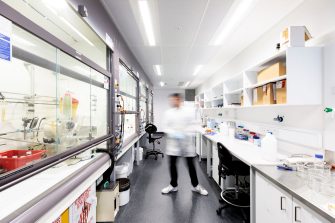
Chemistry laboratory
Chemistry laboratory
The Water Research Laboratory operates a fully equipped chemical laboratory which enables it to undertake sample preparation, separation and preservation of water, effluent, soil and sediment samples. The chemistry laboratory enables WRL to process aqueous and solid phase samples to the highest QA and QC protocols.
The chemistry laboratory is equipped with a fume hood, centrifuge, furnace, drying ovens, vacuum pumps, and water filtration/reverse osmosis unit for producing high purity water. A liquid-water isotope analyser using laser absorption spectroscopy allows measurement of the stable isotopes oxygen-18 and deuterium on site.
The chemistry laboratory also has a walk in cool room for long term storage of chilled and frozen samples, as well as a wide range of commonly used chemical reagents which enables the laboratory to sterilise and acidify samples for preservation; and prepare samples for subsequent laboratory analysis. Analytical standards and blanks are able to be prepared in accordance to the highest QA and QC procedures to ensure accurate and reliable analytical results.
Specialised methods of analysis are developed by WRL using various techniques including spectrophotometry and titration. A chain-of-custody with third party laboratories is maintained for routine tests that are subject to NATA accreditation.
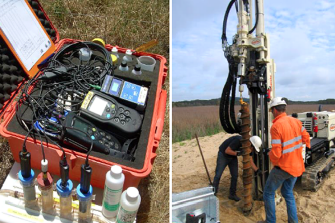
Groundwater field equipment
Groundwater field equipment
The Water Research Laboratory has extensive field equipment for use in groundwater investigations. Equipment ranges from specific to general use, with a multitude of tools to aid in: bore design, aquifer delineation and testing, acid sulfate soil investigation, drilling and hydro-stratigraphic profiling, down-hole geophysical investigation, electrical imaging, resistivity imaging and groundwater quality testing.
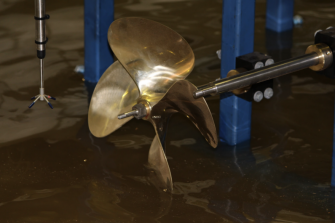
Prop-wash basin
Prop-wash basin
The Water Research Laboratory has a dedicated prop-wash facility for the physical modelling of the effects of ship side thruster forces and vessel propeller wash on port and coastal infrastructure. This facility consists of a 4 m x 7 m x 1.4 m deep basin in which project specific bathymetry, mobile sediments and breakwater armour can be installed.
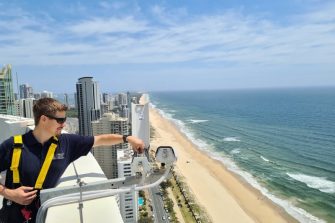
Coastal imaging
Coastal imaging
WRL’s mainstream Coastal Imaging program has achieved significant milestones recently, becoming the largest Coastal Imaging network in the world - with 45 cameras now providing continuous coverage of over 30 km of Gold Coast coastline, we have completed what is the most advanced beach monitoring system globally.
Coastal imaging involves the monitoring (video imaging) and quantitative analysis of several kilometres of coastline at a high resolution in time and space. Monitoring is achieved with one or more automated video cameras that are installed on a high structure and connected to computers that schedule the collection of video image data. Images are subsequently analysed with sophisticated image processing software to obtain quantitative measurements and provide ‘real-time’ online reporting of a wide range of coastal features and processes.
WRL’s coastal imaging system comprises of a programmable video image acquisition system, a standardised database for storing data and a suite of MATLAB based codes and toolboxes for image processing and analysis. WRL coastal engineers and WRL Coastal Imaging servers bring these systems together seamlessly and add features to facilitate the online, ‘real-time’ delivery of coastal imaging and measurement data.
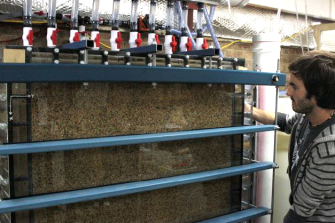
Soils laboratory
Soils laboratory
Soil and sediment samples are often collected in the field for a variety of projects. The Water Research Laboratory’s soils lab is used for the processing and analysis of these samples. Samples can be dried in the oven, sieved through an automated shaker and weighed to great accuracy on a variety of scales. The room temperature of the laboratory can be set to between 18-25°C and controlled to within ±2°C.
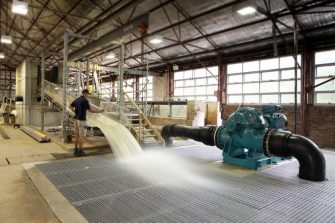
Spillway flume
Spillway flume
WRL’s spillway facility is a unique open channel flow facility allowing continuous uncontrolled and gated spillway experiments with large flow rates. Large flow rates and high Reynolds numbers are needed to limit scale effects and to provide reliable design guidelines for prototype scale hydraulic structures.
The spillway facility is used for fundamental research of complex high-velocity free-surface flows as well as for applied research of hydraulic structure designs. Complex flows, novel hydraulic structures and channel boundaries often require physical modelling as it is the only reliable method for investigation and design.

UAV/drone surveying
UAV/drone surveying
The Water Research Laboratory has developed the expertise, qualifications and equipment range to now provide a professional UAV monitoring service for a wide range of engineering and scientific applications. Our fleet of UAVs includes a fixed wing SenseFly eBee RTK for projects requiring survey grade elevation data, a Vulcan Octocopter with an integrated LiDAR unit for high density surveying and a smaller DJI Phantom 3 Quadcopter with HD video camera suitable for visual aerial monitoring and inspections. Combined with our suite of RTK-GPS equipment, our UAVs provide an innovative and cost effective method to collect high quality survey grade elevation data, high resolution ortho-rectified aerial photography and high definition aerial video data, even in remote areas.

